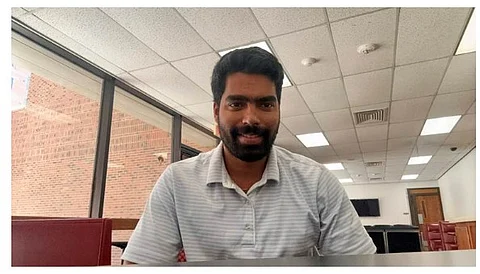How Cutting-Edge Analytics Transformed Medical Curriculum and Elevated Student Performance
The role of data analytics in education has gained considerable attention, especially in the field of medical training. By using real-time data, educators and institutions are altering the way students engage with their curriculum and approach their studies. This shift is reshaping educational methods to enhance learning outcomes and prepare students for their future careers in healthcare.
At the forefront of this transformation is Rohit Reddy Prabhakar, a key figure in integrating advanced analytics into medical programs. His work has been instrumental in moving away from the traditional lecture-based teaching model and towards a personalized, data-driven approach to medical education.
This approach has improved student engagement and lowered dropout rates, while also leading to better performance in exams and clinical proficiency assessments. By embedding analytics into the curriculum, Rohit has assisted in creating a more responsive and student-centered educational environment.
Here, data is used to track student progress and identify patterns in performance, which helped instructors tailor learning experiences for each individual. The introduction of a digital portfolio to monitor student competencies over time proved particularly effective. With this tool, students could track their development, while instructors could identify early on which students might be struggling and intervene before issues became more significant. This personalized approach, backed by evidence, has led to improved examination scores and overall student satisfaction.
An outstanding success within this project was improving pass rates for core medical examinations. Changing the curriculum structure to incorporate personalized learning pathways in the form of data allowed students to be better prepared for tests, leading to improved pass rates and improved average scores. Additionally, students entering their final year showed a stronger clinical proficiency, as measured by the number meeting critical milestones. This enhanced readiness helped reduce delays in clinical rotations, ensuring smoother transitions from the classroom to real-world practice.
However, this shift from a traditional teaching model to a data-driven one was quite complicated. One of the greatest challenges encountered was to get faculty members on board with adopting a more data-driven model for teaching. Instructors were skeptical at first, worried that analytics would eliminate their teaching methodologies. But after witnessing how analytics could be used to identify students in need and better assist them, they began to be receptive to the change. “Over time, these efforts unified diverse teams under a common goal of leveraging evidence-based practices, fostering a culture of continual improvement, and solidifying the organization’s reputation for innovation in medical education,” he added.
Another obstacle was the compatibility of the different systems across the university departments. The team was able to integrate the systems and establish a common data strategy that improved accuracy and developed reliable and usable analytics. Security was an additional concern among the many concerns. Deploying strict privacy standards helped to keep the data secure and develop trust with students and other faculty.
In addition to this work, Rohit also expressed his thoughts through his paper, "AI-Based Predictive Analysis for Medical Education Outcomes" where he discusses how the use of AI in medical education improves learning and greatly impacts student outcomes, maximization of resources, and customizing student learning experiences while addressing ethical issues like data privacy and bias.
In the future, experts in the industry predict high potential for predictive analytics and AI to be used in medical education. As technologies such as machine learning and virtual reality improve, personalized learning experiences will be the norm. The use of data ethically cannot be underestimated, as it helps students feel confident that their information is handled appropriately. Using data has been proven to improve learning outcomes, performance on exams, and clinical skills. Finally, data-driven education is enhancing medical training and offering improved opportunities for students.
.png)

